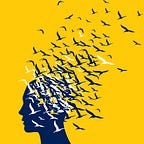Gamification: Make Your Learning More Fun
Do you remember completing your social media profile to reach a 100% completion bar, collecting points on a product to earn a gift card, or receiving a bonus drink after making a few purchases at a coffee shop? These are examples of gamification in our daily lives.
Gamification involves using game elements to enhance non-game experiences, with the goal of increasing user engagement and loyalty. Game designers employ data-driven techniques such as points, leaderboards, badges, and achievements to achieve this goal.
Gamification has many connections to learning. Although it has been used to improve various experiences, it is mainly used in teaching and learning contexts. From traditional classrooms to corporate settings, gamification of learning processes and experiences has yielded unexpected results.
It is important not to confuse gamification with game-based learning. Rather than developing a game to teach a subject, gamification involves enhancing or slightly modifying an existing experience, and usually does not require building anything new.
Gamification Elements
Gamification incorporates several game elements, such as points, levels (experience), missions (individual or team), achievements/badges, leaderboards, unlocks, quizzes, and visual progress tracking (chart)…
